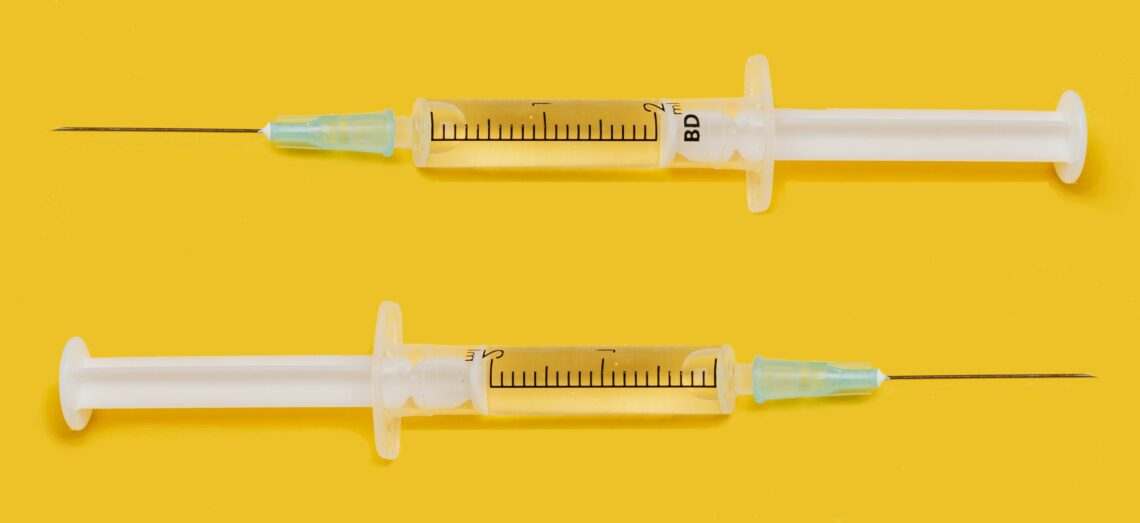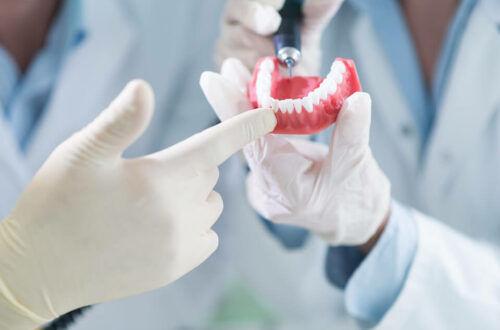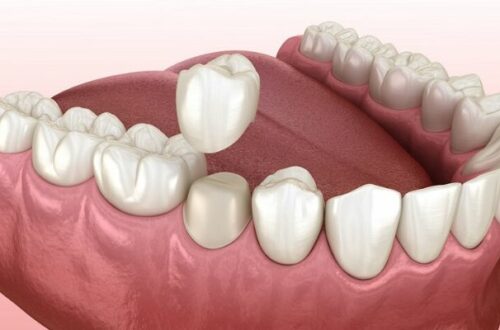
The Ultimate Guide to Lymphatic Drainage: What It Is and How It Benefits Your Health
The lymphatic system is a vital component of our overall health and well-being. It comprises a network of vessels, nodes, and organs that work together to remove waste and toxins from our body, as well as to fight off infections and diseases. When the lymphatic system is not functioning properly, it can lead to a host of health problems, including swelling, inflammation, and even chronic diseases. That’s where lymphatic drainage comes in.
Lymphatic drainage is a powerful therapy that helps to stimulate the lymphatic system and promote the natural flow of lymphatic fluid throughout the body. This therapy is designed to improve circulation, reduce inflammation, and boost the immune system. In this ultimate guide to lymphatic drainage, we’ll explore what it is, how it works, and the amazing benefits it can offer for your health and well-being.
If you want to take care of your health and eliminate any pain, contact a qualified physiotherapist who performs treatments as part of the services of Poznan physiotherapy, Poznan massage and Poznan rehabilitation. Find out more by visiting this specialist’s website.
What is the lymphatic system?
The lymphatic system is a complex network of vessels, nodes, and organs that work together to remove waste and toxins from our body, as well as to fight off infections and diseases. It is responsible for transporting lymphatic fluid, which is a clear fluid that carries white blood cells, throughout the body. The lymphatic system is also a crucial component of the immune system, as it helps to identify and neutralize pathogens and other harmful substances in the body.
The lymphatic system includes the following organs and structures:
- Lymph nodes: small, bean-shaped structures that filter lymphatic fluid
- Spleen: an organ that filters blood and produces white blood cells
- Thymus: a gland that produces T-cells, which are white blood cells that play a key role in the immune system
- Bone marrow: the soft tissue inside bones that produces red and white blood cells
- Lymphatic vessels: a network of vessels that carry lymphatic fluid throughout the body
Why is the lymphatic system important for our health?
The lymphatic system plays a critical role in maintaining our overall health and well-being. It is responsible for removing waste and toxins from our body, as well as fighting off infections and diseases. When the lymphatic system is not functioning properly, it can lead to a host of health problems, including swelling, inflammation, and even chronic diseases.
One of the key functions of the lymphatic system is to transport lymphatic fluid throughout the body. This fluid contains white blood cells, which are a critical component of the immune system. White blood cells help to identify and neutralize pathogens and other harmful substances in the body. Without a functioning lymphatic system, the body would be unable to effectively fight off infections and diseases.
The lymphatic system is also responsible for removing waste and toxins from our body. When lymphatic fluid flows through the lymphatic vessels and nodes, it picks up waste and toxins and transports them to the lymph nodes, where they are filtered out and eliminated from the body. This process helps to keep our body clean and healthy.
What is lymphatic drainage therapy?
Lymphatic drainage therapy is a type of massage therapy that is designed to stimulate the lymphatic system and promote the natural flow of lymphatic fluid throughout the body. This therapy is typically performed by a trained therapist who uses gentle, rhythmic strokes to stimulate the lymphatic vessels and nodes.
During a lymphatic drainage session, the therapist will use a variety of techniques to stimulate the lymphatic system, including manual lymphatic drainage, which involves gentle massage strokes that are designed to promote the natural flow of lymphatic fluid. The therapist may also use other techniques, such as compression therapy, which involves the use of compression garments or bandages to help stimulate the lymphatic system.
Lymphatic drainage therapy is typically performed on the arms, legs, neck, and face, although it can be performed on other parts of the body as well. The therapy is gentle and non-invasive, making it a safe and effective treatment option for people of all ages and health conditions.
Benefits of lymphatic drainage therapy
Lymphatic drainage therapy offers a wide range of benefits for our health and well-being. Some of the key benefits of this therapy include:
1. Improved circulation
Lymphatic drainage therapy helps to improve circulation by stimulating the lymphatic system and promoting the natural flow of lymphatic fluid throughout the body. This can help to reduce swelling and inflammation, as well as improve blood flow to the affected areas.
2. Reduced inflammation
Inflammation is a natural response to injury or infection, but when it becomes chronic, it can lead to a host of health problems, including pain, swelling, and even chronic diseases. Lymphatic drainage therapy can help to reduce inflammation by promoting the natural flow of lymphatic fluid, which can help to flush out toxins and reduce swelling.
3. Boosted immune system
The lymphatic system is a crucial component of the immune system, as it helps to identify and neutralize pathogens and other harmful substances in the body. Lymphatic drainage therapy can help to boost the immune system by stimulating the lymphatic system and promoting the natural flow of lymphatic fluid throughout the body.
4. Improved skin health
Lymphatic drainage therapy can help to improve skin health by promoting the natural flow of lymphatic fluid, which can help to flush out toxins and reduce inflammation. This can lead to clearer, healthier-looking skin.
5. Relief from chronic conditions
Lymphatic drainage therapy can be an effective treatment option for people with chronic conditions, such as lymphedema, fibromyalgia, and chronic fatigue syndrome. The therapy can help to reduce pain, improve mobility, and promote overall health and well-being.
Who can benefit from lymphatic drainage therapy?
Lymphatic drainage therapy can be beneficial for a wide range of people, including those who are looking to improve their overall health and well-being, as well as those who are seeking relief from specific health issues. Some of the people who may benefit from this therapy include:
- People with lymphedema or other lymphatic disorders
- People with chronic pain or inflammation
- People with autoimmune disorders
- People recovering from surgery or injury
- People with digestive issues
- People with skin conditions, such as acne or rosacea
How to prepare for a lymphatic drainage session
Before your lymphatic drainage session, there are a few things you can do to prepare:
1. Drink plenty of water
It’s important to drink plenty of water before and after your lymphatic drainage session. This will help to keep you hydrated and improve the flow of lymphatic fluid throughout your body.
2. Wear comfortable clothing
You should wear loose, comfortable clothing to your lymphatic drainage session. This will help to ensure that you are comfortable throughout the session and that the therapist is able to access the areas of your body that need to be treated.
3. Avoid eating a heavy meal
You should avoid eating a heavy meal before your lymphatic drainage session, as this can make you feel bloated and uncomfortable. Instead, eat a light, healthy meal or snack before your session.
What to expect during a lymphatic drainage session
During your lymphatic drainage session, you can expect the following:
1. Assessment
The therapist will begin by assessing your lymphatic system to determine the areas that need to be treated. They will also ask you about your health history and any symptoms you may be experiencing.
2. Treatment
The therapist will then use a variety of techniques to stimulate the lymphatic system and promote the natural flow of lymphatic fluid throughout the body. This may include manual lymphatic drainage, compression therapy, or other techniques.
3. Aftercare
After your lymphatic drainage session, the therapist may provide you with some aftercare instructions, such as drinking plenty of water, avoiding heavy lifting or strenuous exercise, and wearing compression garments or bandages.
Aftercare tips for lymphatic drainage therapy
After your lymphatic drainage session, there are a few things you can do to ensure that you get the most out of your treatment:
1. Drink plenty of water
It’s important to drink plenty of water after your lymphatic drainage session to help flush out toxins and improve the flow of lymphatic fluid throughout your body.
2. Avoid heavy lifting or strenuous exercise
You should avoid heavy lifting or strenuous exercise for at least 24 hours after your lymphatic drainage session. This will help to prevent swelling or other complications.
3. Wear compression garments or bandages
The therapist may recommend that you wear compression garments or bandages after your lymphatic drainage session. These can help to promote the natural flow of lymphatic fluid and reduce swelling.
DIY lymphatic drainage techniques
There are also some DIY lymphatic drainage techniques that you can try at home to promote the natural flow of lymphatic fluid throughout your body. These include:
1. Dry brushing
Dry brushing involves using a dry brush to gently massage the skin in circular motions. This can help to stimulate the lymphatic system and promote the natural flow of lymphatic fluid throughout the body.
2. Exercise
Regular exercise can help to stimulate the lymphatic system and promote the natural flow of lymphatic fluid throughout the body. Some good exercises for lymphatic drainage include rebounding, yoga, and swimming.
3. Massage Poznan
Gentle massage can also help to stimulate the lymphatic system and promote the natural flow of lymphatic fluid throughout the body. You can try massaging the areas of your body that are prone to swelling or inflammation, such as your legs or face.
Conclusion: The importance of lymphatic drainage for overall health and wellness
Lymphatic drainage is a powerful therapy that can offer a wide range of benefits for our health and well-being. By stimulating the lymphatic system and promoting the natural flow of lymphatic fluid throughout the body, this therapy can help to improve circulation, reduce inflammation, and boost the immune system. Whether you are looking to improve your overall health or seeking relief from specific health issues, lymphatic drainage therapy can be an effective treatment option that can help you achieve optimal health and wellness.



